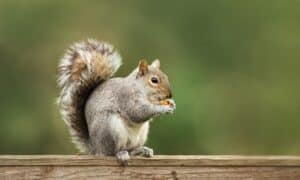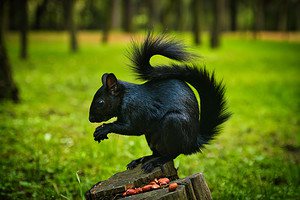Red squirrels are some of the most adorable little animals which can be seen scampering around and leaping between trees with ease. With their characteristic red coat and bushy tail they are easily recognisable. They are native to Europe and Siberia where they live in coniferous, broad leaf, and mixed woodlands. Red squirrels are fascinating animals and there is much more to them than meets the eye. So join us as we discover 10 incredible red squirrel facts!
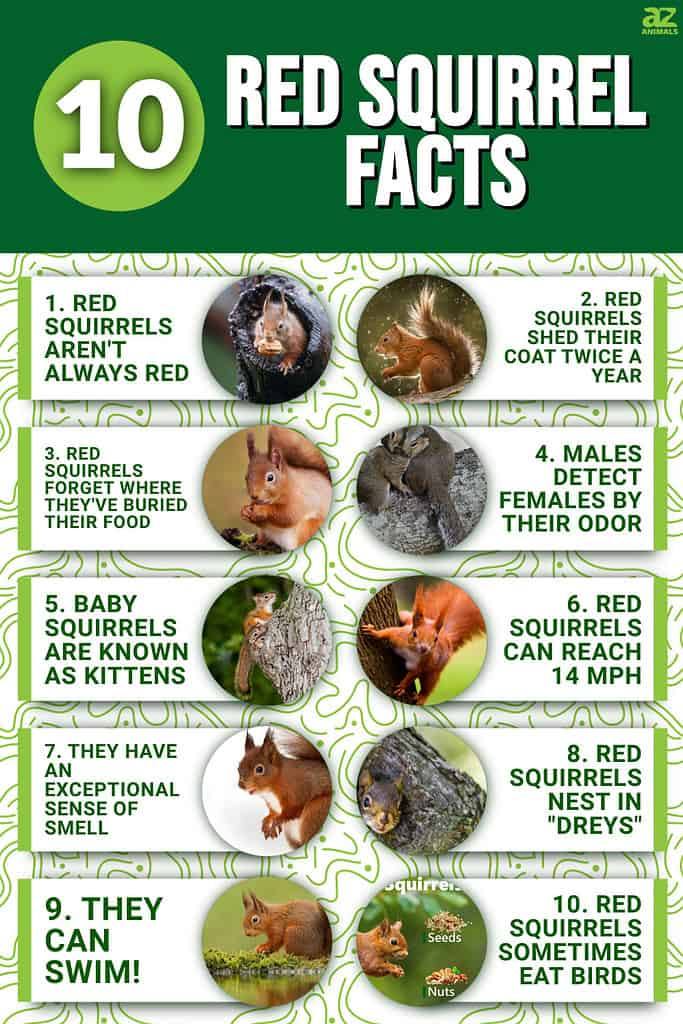
1. Red Squirrels Aren’t Always Red
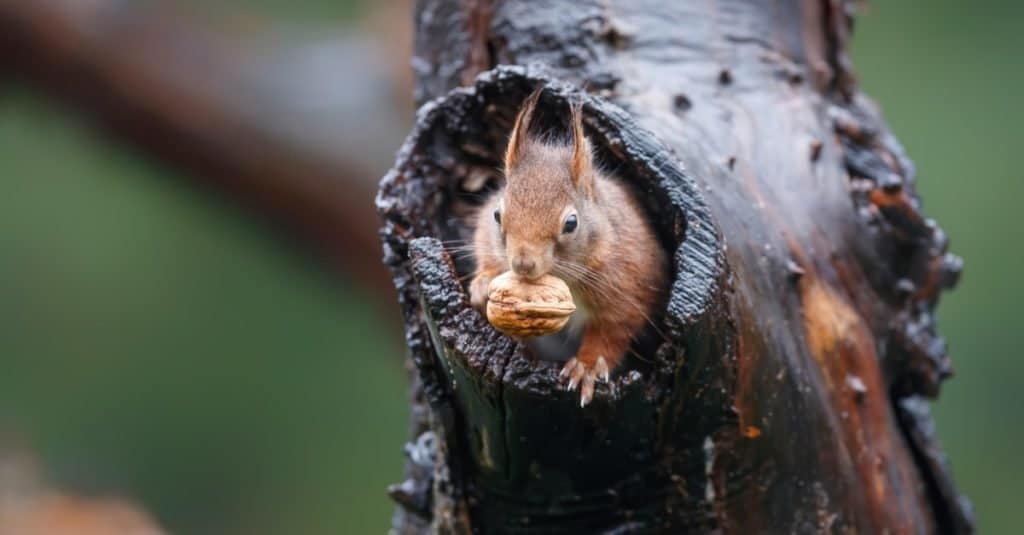
Red squirrels are typically a rusty shade, but their fur can be many other colors as well.
©Henk Bogaard/Shutterstock.com
When we hear the name “red squirrel” we understandably instantly assume that they are red, but this is not always the case. Although the majority of red squirrels are usually a rusty red color with a cream or white underside, they can actually vary from black to almost white as well as any shade in between. Coat color can vary depending on the genetics of the squirrel and also on their location.
2. Red Squirrels Shed Their Coat Twice a Year
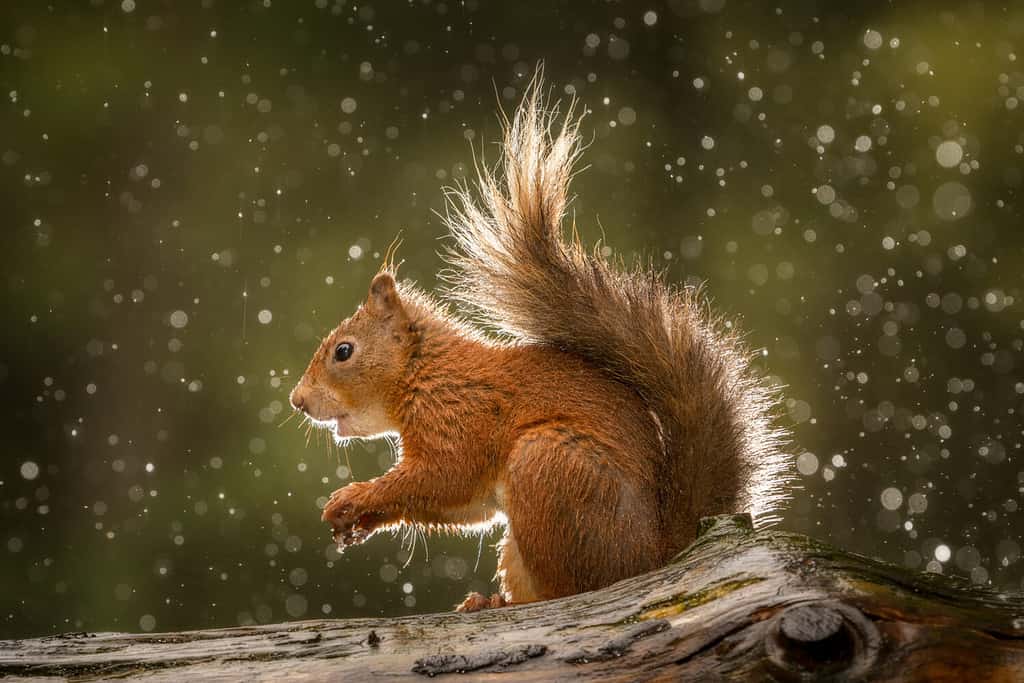
When a red squirrel sheds its thinner summer coat, its winter coat comes in thicker and darker.
©Christopher Chambers/Shutterstock.com
Although red squirrels look as though they always have a thick and fluffy coat all year round, they actually shed it twice a year. They typically shed their coats in the spring and at the end of the summer, although slight differences can depend on their location and the climate. Red squirrels have a thinner summer coat which is usually coming through before well before they shed their winter coat. The winter coat is a thicker and a darker color. During the winter they also have larger ear tufts. These are often shed at the end of the summer but quickly grow back again.
3. Red Squirrels Forget Where they’ve Buried their Food
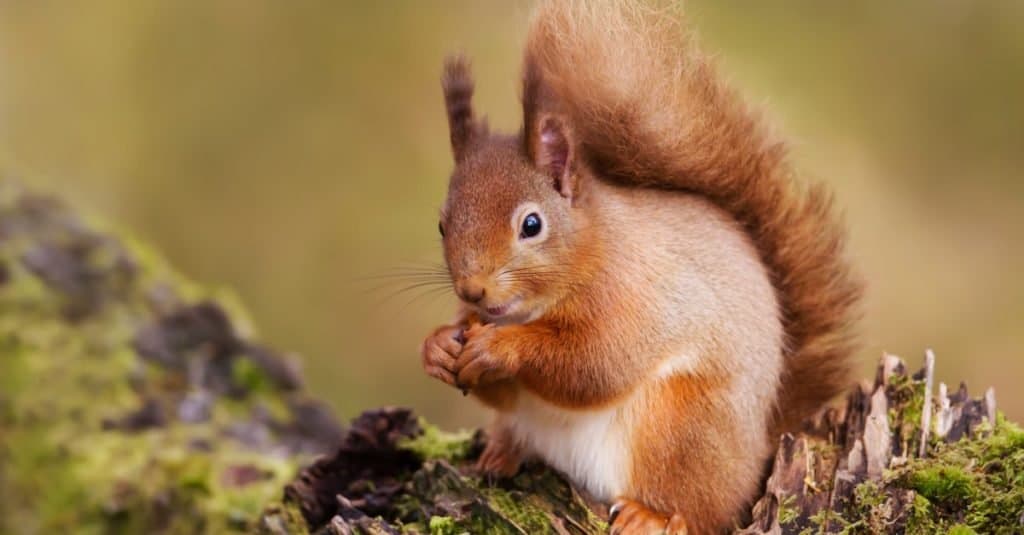
Red Squirrels sometimes forget where they have stored their food.
©Giedriius/Shutterstock.com
Caching food is incredibly important to squirrels as they store food when it is plentiful so that they have enough for the winter when it is scarce. However, one of the most fascinating things about red squirrels is that they sometimes forget where they have buried it. This often results in the buried nuts growing and creating new trees – meaning that squirrels aren’t called “nature’s planters” for nothing!
4. Males Detect Females by their Odor

Squirrel couple during mating season.
©iStock.com/BetsyMoseley
Red squirrels are shy and solitary animals and tend to live within their own ranges. However, this changes during the breeding season as the males manage to detect the females by their smell. Female red squirrels which are ready to mate produce an odor that the males are able to detect. There is no courtship ritual between red squirrels but the male typically chases the female for around an hour before they mate. It’s not unusual for several males to chase the female before the larger and more dominant male successfully mates with her.
5. Baby Squirrels are Known as Kittens
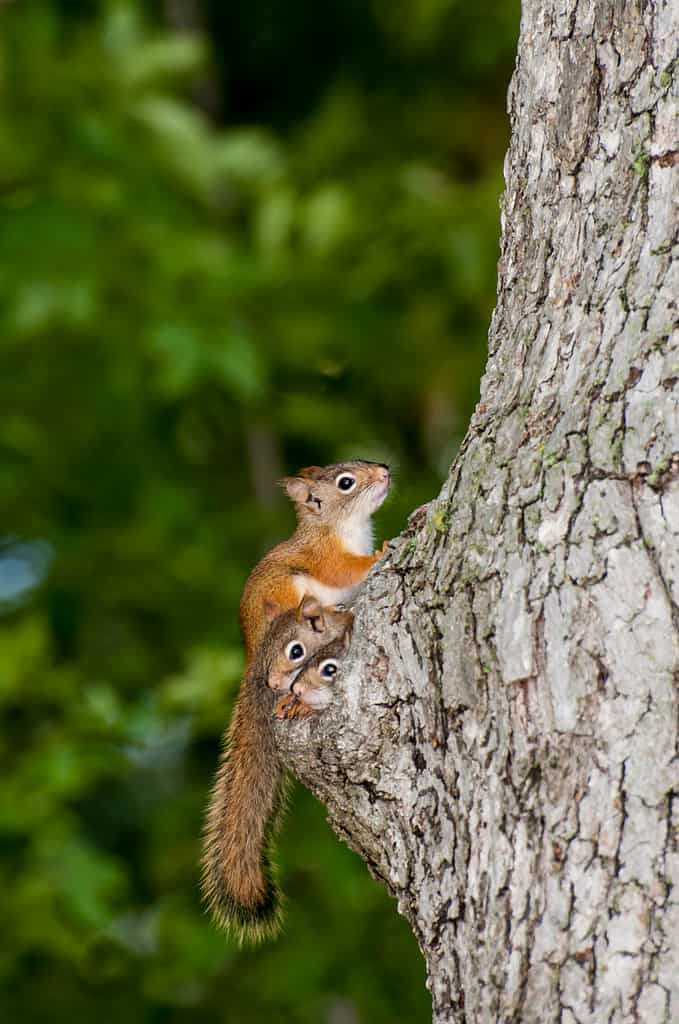
Red squirrels give birth to kittens in the spring.
©Michael Siluk/Shutterstock.com
Some of the most adorable things in the world are baby animals, and baby squirrels are known as kittens. Red squirrels give birth in the summer and each litter averages three kittens. The babies are tiny – between 0.2 and 0.3 pounds – and are born blind, deaf, and hairless. They are entirely reliant on their mother for both protection and nourishment. They have their fur by the time they are three weeks old and their eyes and ears open after around four weeks. By the time they are around six weeks old they are able to begin to eat solid food. However, they remain with their mother until they are completely weaned at 8 to 10 weeks old. Infant mortality is high amongst red squirrels and as many as 50% of all young die within their first year.
6. Red Squirrels Can Reach 14 mph
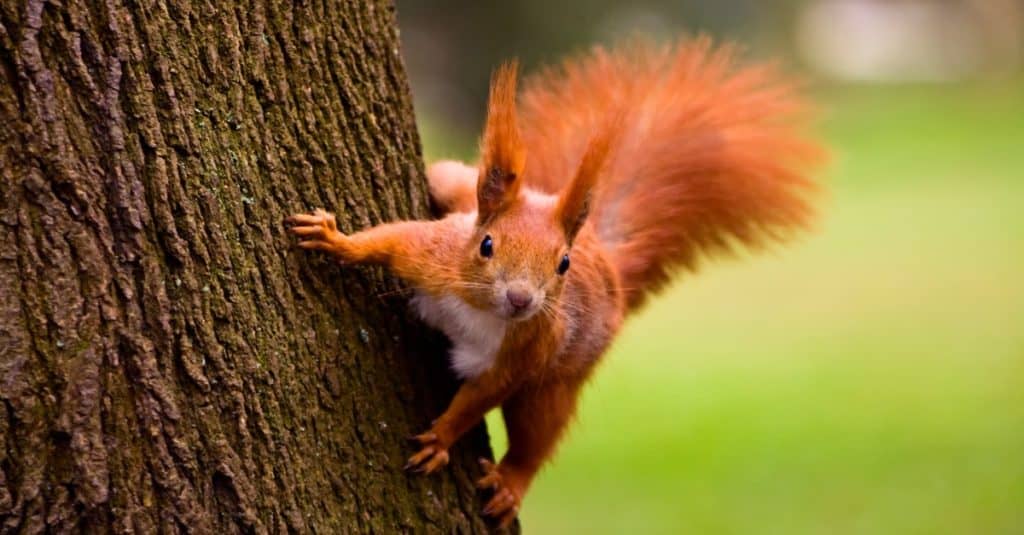
Red squirrels can reach 14 mph over short distances while running and jumping between trees.
©seawhisper/Shutterstock.com
The sight of a red squirrel scampering along a tree branch is one of nature’s most lovely sights, and as surprising as it might seem they can actually reach a pretty good speed. Despite only having small legs, red squirrels can manage to achieve speeds of up to 14 mph over short distances.
7. They Have an Exceptional Sense of Smell

Red Squirrel isolated on white background
©Giedriius/Shutterstock.com
Red squirrels have an exceptional sense of smell which is particularly useful for detecting scents left by other squirrels. Although it might seem somewhat surprising since we’ve already mentioned that they sometimes forget where they’ve buried their cache of food, red squirrels also use their sense of smell to detect their food. This is because if once they remember the general location where they’ve left it they can easily detect it using their noses. In fact, they can even detect food that is buried under one foot of snow! Not only that, but they’re able to detect a rotten acorn without needing to open it – just by using their nose. We’re sure that this must be a lot better than biting into it and only finding out once they taste it!
8. Red Squirrels Nest in “Dreys”

A squirrel nest in the hollow of a tree is called a drey.
©RT Images/Shutterstock.com
One of the most important places to a red squirrel is its nest – which is also known as a “drey”. These nests are usually built in the forks of trees close to the tree trunk about two-thirds of the way up. They are typically ball-shaped and are made from interwoven twigs. Inside the nest is lined with moss, grass, and leaves. Red squirrels don’t hibernate so it’s important that it is somewhere warm for them to sleep during the winter.
9. They can Swim!
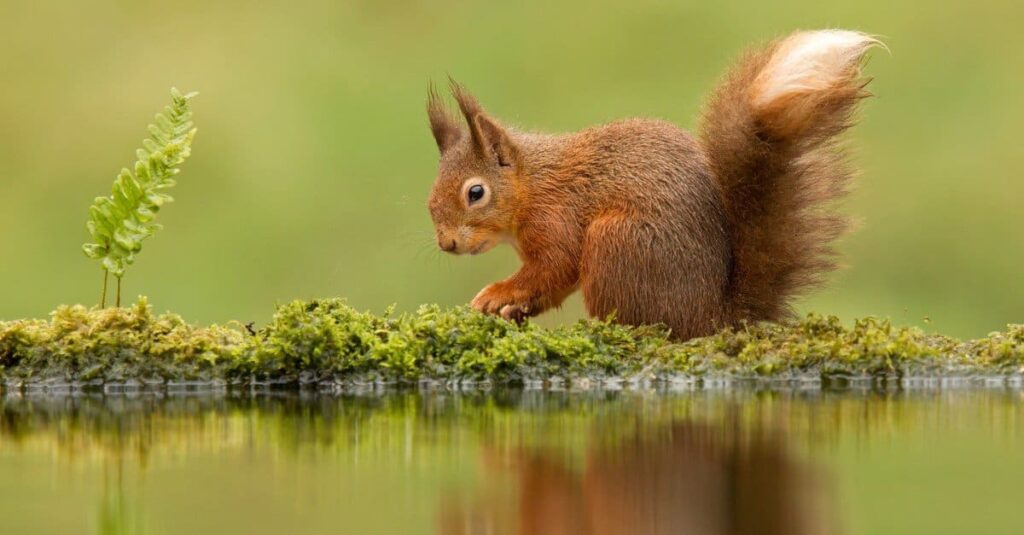
Surprisingly, red squirrels can swim across lakes and ponds!
©Giedriius/Shutterstock.com
There are many animals that can spend time in water and many are strong and capable swimmers. However, one of the last animals that we can imagine doing so is a squirrel. Surprisingly though, red squirrels can swim! Although red squirrels aren’t exactly the best swimmers in the world, they can swim when they need to. Red squirrels swim using a doggy paddle with their tail stretched out behind them and acting like a rudder. There was even a red squirrel spotted almost 1,000 feet from shore in the middle of a lake in the UK! There are a few reasons that red squirrels might decide to go swimming. These include crossing the water to get to a destination on the other side and being chased in by predators.
10. Red Squirrels Sometimes Eat Birds

When we think of the diet of a red squirrel we instantly think of them eating things like berries and acorns. However, this is not always strictly the case. Although red squirrels primarily maintain a herbivorous diet and eat nuts, fruits, and seeds they do sometimes eat small birds, chicks, and eggs. These occasions are usually opportunistic in nature and can be driven by times of food scarcity.
The photo featured at the top of this post is © Giedriius/Shutterstock.com
Thank you for reading! Have some feedback for us? Contact the AZ Animals editorial team.




